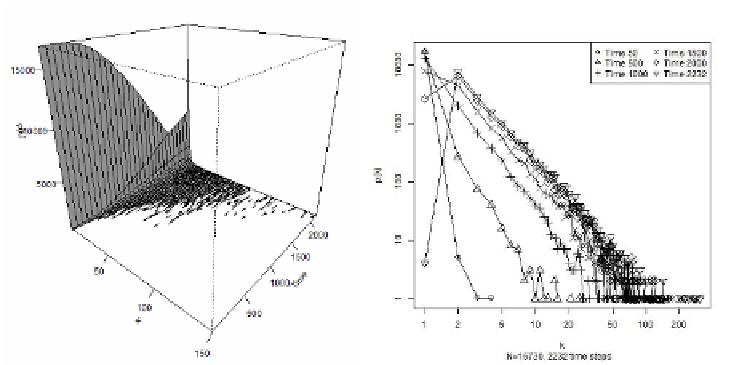Information Technology Reference
In-Depth Information
Fig. 7.
Degree distribution evolution for the cumulative network constructed for the
dataset of Rocha et al.
the first 2,000 time steps, and the log-log degree distribution starts transforming
drastically in the last 200 time steps. This indicates that additional accumulated
data might alter the powerlaw nature of the degree distribution of the cumulative
network.
4 Conclusion and Future Works
In this paper we have studied how elementary dynamic network models behave
compared to various empirical networks. Starting from an empty initial network,
we examined network properties (like density, clustering, average path length,
number of components and different views about the degree distribution) of
both snapshot and cumulative networks for various lengths of aggregation time
windows.
The results reported in this paper summarize the first phase of a longer re-
search plan. We found that the baseline properties of the elementary dynamic
network models show identical trends, in the analysed statistics, to the ones ex-
posed by the empirical data sets. The knowledge of the baseline behavior of the
abstract elementary dynamic network models helps us to identify the important,
idiosynchratic properties of the empirical networks. However, we found notable
differences.
In the first case, the Gulf dataset show exceptionally high clustering values,
very low average but extremely high maximal betweenness. The reason for that is
the existence of a highly connected core in the network. We would like to extend
our investigation with further datasets and - as the Gulf dataset emphasized
- perform experiments with a stable core that is highly connected and/or un-
changed during the simulation. We also found that time granuality (i.e., monthly

